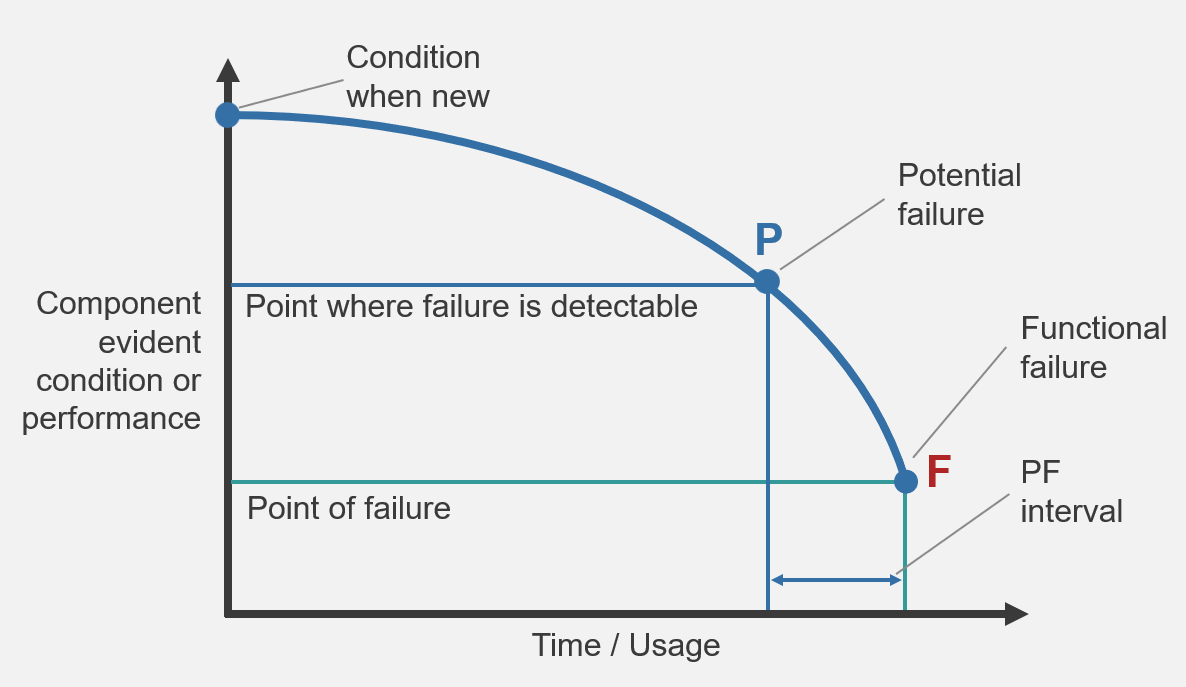Authors | Matt Bridger and Scheepers Schoeman
Decoding Industry 4.0: The rise of condition monitoring
The fourth industrial revolution, or Industry 4.0, is marked by integrating digital technologies into industrial processes, reshaping the asset management environment. This integration has opened up new opportunities for organisations to increase efficiency and productivity, with condition monitoring emerging as a preferred maintenance technology in the era of Industry 4.0.
Condition monitoring is a proactive approach to maintenance that involves regularly assessing the health and performance of machinery, equipment, or systems to identify potential issues before they lead to unplanned downtime or catastrophic failures. Condition monitoring involves collecting and analysing data from equipment to detect early signs of wear and tear, defects, or other issues that may lead to equipment failure and provide an accurate estimation of how much useful life an asset has remaining. This article will unpack how condition monitoring takes the lead in proactive maintenance.
Beneath the surface: Navigating the probability of the PF curve
Condition-based maintenance aims to match the equipment most important to your production process to the correct condition monitoring technology and choose the measuring interval so that failures that are starting to occur (potential failures) can be detected early enough. With this knowledge, you can plan and schedule the corrective task (for example, replacing the bearing that is starting to fail) before this potential failure becomes an actual failure and your machine breaks down during production time.
The theory of condition monitoring is illustrated with the Probability of Failure (PF) curve in Figure 1. The PF curve is a graphical representation that helps demonstrate the health of an asset over time and indicates when it is probable to identify (detect) potential failures (P point in Figure 1) and the period before a complete functional failure (F point in Figure 1). Different condition monitoring techniques can detect the P point sooner on the PF curve by monitoring various parameters and detecting different failure modes.

Figure 1: The PF Curve
The benefit of condition monitoring (inside a condition-based maintenance (CBM) programme) is that it strikes the best balance between maintenance costs and equipment reliability. One alternative to CBM is reactive maintenance, best described as waiting for an asset to fail and only then maintaining or repairing it. Selecting reactive maintenance as a strategy may allow you to obtain the maximum life from components. However, consider the flip side of costly production stoppages and high spare parts carrying costs.
Another tactic is usage-based maintenance (UBM), which uses statistical data to schedule maintenance tasks. An example is replacing motors on the plant every six months because, from previous experience, this is when the motors in that application start to fail. Using UBM allows you time to prevent unplanned production stoppages but increases an organisation’s spend on spare parts and maintenance labour.
With CBM as a tactic, maintenance intervals can be optimised based on the actual machine condition, preventing production stoppages and using the whole life of the machine components. For example, if a motor is monitored using vibration analysis and a bearing defect is detected, it can be replaced during planned maintenance, avoiding a catastrophic failure requiring unplanned downtime and costly repairs and improving overall equipment effectiveness (OEE).
By addressing potential issues early, organisations can prevent further damage to equipment and extend the asset lifespan. This can help reduce the replacement cost and improve the equipment’s return on investment (ROI). Early detection of potential failures can also help improve safety by identifying and addressing issues before they become hazardous to workers or the environment.
Technology toolbox: Choosing the right condition monitoring technology
The choice of which condition monitoring technology to use depends on several factors, such as the type of equipment, its criticality, the accessibility of the equipment, and the expected failure modes. There are several condition monitoring technologies available; some of the more common ones are listed below:
- Vibration analysis can detect the early signs of failure in rotating machinery by monitoring vibration levels and patterns. For example, if a bearing defect is present, the vibration levels will increase, and specific frequency patterns will manifest.
- Oil analysis can detect the early signs of wear and tear in equipment by monitoring trace elements in the lubricant and can detect deterioration in the condition of the lubricant. For example, if there is excessive wear in a gearbox, the oil will contain metal particles (eg brass particles indicate bearing wear, and iron or chrome can indicate gear wear).
- Thermography can detect the early signs of electrical or mechanical issues by monitoring temperature profiles. For example, if an electrical connection is loose, it will heat up; thermography can detect this.
- Ultrasonic testing can detect early leaks or blockages in equipment by monitoring high-frequency sound waves. For example, if there is a leak in a compressed air system, ultrasonic testing can detect the sound of the leak.
A balancing act: Permanent versus intermittent condition monitoring methods
Over and above this range of technologies, there is also the choice between diagnostic and trending condition monitoring methods:
- Diagnostic condition monitoring takes readings intermittently with mobile data collection equipment (such as a vibration analysis data logger). It refers to using non-permanent, external measuring equipment to gather data from the components. The measuring equipment must be operated by a competent person who has received the relevant training. The frequency of measurements depends on the strategy, resource availability, and current component condition. Diagnostic methods are cheaper than permanent sensors but require more resources regarding maintenance personnel and condition monitoring specialists’ availability.
- Trending condition monitoring is “intime” or “continuous” assessments, achieved by installing permanent sensors onto the critical components and trending the data over a period of time. Permanent sensors work well on components essential for production and give intime information about the machine’s condition. Further, installing permanent sensors is a preferred diagnostic method for hard-to-reach components (eg where equipment must be measured whilst the machine is running or behind an interlock guard). It is, however, expensive to implement and requires specialised training to interpret the data. The storage of big data generated by the permanent sensors should also be considered when doing a cost analysis.
An organisation must correctly choose the equipment to use condition monitoring on, the type of condition monitoring technique and the optimal monitoring interval. The correct equipment is identified by conducting a business impact criticality assessment to identify critical equipment and determine the potential impact of equipment failure. This will prioritise equipment for condition monitoring and focus resources on areas with the highest risk. Organisations should capture these choices in maintenance plans and integrate the process into the maintenance work management process to ensure that condition monitoring data is analysed and acted on.
What makes the most financial sense – permanently installed sensors, intermittent readings and analysis, or even no condition monitoring at all?
Implementing condition monitoring can be expensive. The cost of sensors and other equipment required for condition monitoring can be high, and additional costs may be associated with training personnel to use the equipment and analyse the data from condition monitoring. Organisations need to weigh the cost of implementation against the potential benefits of condition monitoring.
The good news is that the cost of sensors has decreased in recent years, making it more affordable for organisations to implement condition monitoring. Additionally, the increasing availability of cloud computing and the Internet of Things (IoT) has made it easier to collect and analyse data in realtime, further reducing the cost of implementation. Organisations must carefully consider their equipment and processes to maximise the opportunity of using sensors, which have become more affordable. Critical equipment essential to production should be prioritised when installing permanent sensors for condition monitoring. Less critical equipment may not justify the cost of implementation or should instead be considered for diagnostic (intermittent) monitoring methods.
Considerations where utilising permanent condition monitoring sensors may make financial sense include:
- High-risk equipment – organisations that rely on high-risk equipment that can cause significant production losses or safety hazards in the event of failure.
- High-value equipment – organisations that invest a significant amount of money in equipment can benefit from the extended lifespan of the equipment and improved return on investment (ROI).
- Industry regulations – organisations that operate in industries with strict regulations, such as the food and pharmaceutical industries, may be required to implement online condition monitoring to comply with regulatory requirements.
The advantage of intermittent (diagnostic) condition monitoring methods is that there is no initial installation cost, especially when using an external service provider. The service cost is also relatively low, considering the value of the information received. The disadvantage is that the data only provides a series of snapshots taken of the asset condition. The asset is not continuously monitored, and if the monitoring frequency is too low, it is possible to experience failures between monitoring events. Trends are always valuable when detecting failures; however, it takes longer to establish a beneficial trend with intermittent monitoring.
Some types of equipment are not suited to condition monitoring. For example, many electronic equipment types cannot be monitored at all (barring perhaps using thermography to detect loose connections). For low-value, low-consequence equipment, it may not make financial sense to monitor the condition of an asset or component. However, it will always be advantageous for maintenance personnel to have the machine condition information and knowledge, as it can assist in making informed decisions.
The cost conundrum: Making sense of condition monitoring expenses
When considering the cost of implementation, organisations must be cognisant of the total cost of ownership (TCO), including equipment, installation, maintenance, and personnel training. By determining the TCO, businesses can make informed decisions about the benefits of condition monitoring and whether it is financially viable.
Read more about our condition monitoring service solutions here.

